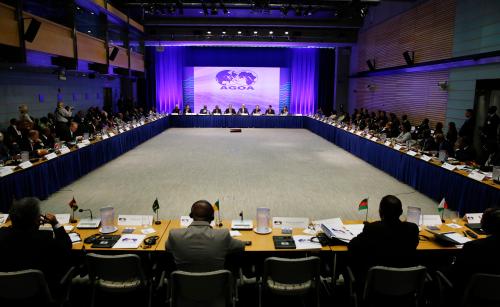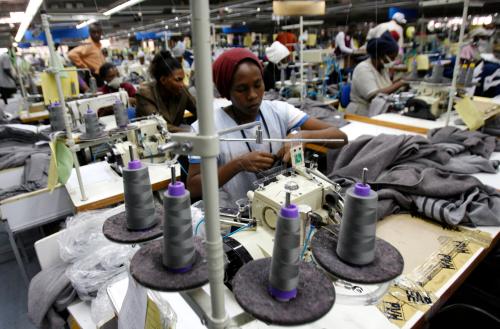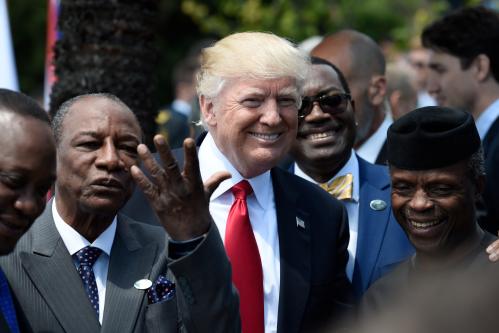Last week, the office of the United States Trade Representative released the 2018 biennial report on the implementation of the African Growth and Opportunity Act (AGOA). The report presents data on trade and investment between the United States and sub-Saharan Africa along with a review of AGOA eligibility for each country in the region.
As Figure 1 shows, U.S. imports from sub-Saharan Africa are recovering from the low in 2015, rising from $18.8 billion to $24.9 billion in 2017. The report primarily attributes this increase in the value of trade to rising commodity prices: Oil accounted for almost half of U.S. imports from sub-Saharan Africa, $11.2 billion of the $24.9 billion. Non-oil related imports falling under AGOA increased only marginally from $4.1 billion to $4.3 billion. Beyond oil, precious metals, cocoa, and vehicles were the most imported products from sub-Saharan Africa.
U.S. exports to sub-Saharan Africa stood at $14.1 billion in 2017, lower than the $18 billion in 2015 partly due to lower aircraft sales. From the U.S. perspective, its largest export market was South Africa at $5 billion, and its largest source of imports was Nigeria at $6.1 billion.
Figure 1: United States trade with sub-Saharan Africa

As Table 1 shows, U.S. investment stock in sub-Saharan Africa stood at $29 billion in 2016, 23 percent below its 2014 peak of $37.5 billion. Mauritius, South Africa, and Nigeria are the three largest destinations for U.S. investment in the region. Sub-Saharan African investment stock in the U.S. increased from $1.6 billion in 2014 to $4.2 billion in 2015 and 2016, however, more than 75 percent of it originated in South Africa.
Table 1: Investment between the United States and sub-Saharan Africa (billions of dollars)

The report also provides updates on the 2017 country eligibility review for AGOA with the Gambia and Swaziland reinstated in the program beginning January 1, 2018. An out-of-cycle review of Rwanda started in 2017 resulted in the suspension of duty-free treatment for all AGOA-eligible apparel products from the country starting June 2018.







Commentary
Figures of the week: Update on US-Africa trade and the implementation of AGOA
July 6, 2018